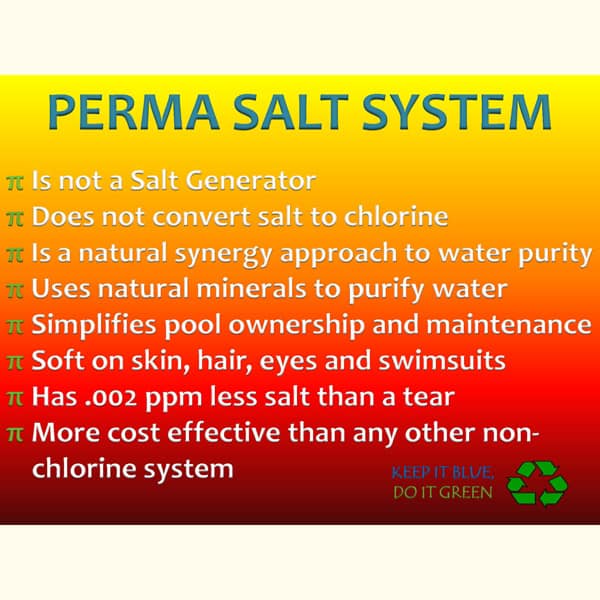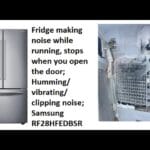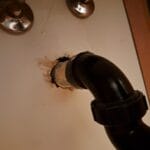Maintaining a pool can be a challenge. Perma Salt Systems help, but issues arise.
Understanding troubleshooting is key to keeping your pool in top shape. The Perma Salt System simplifies pool care by reducing the need for harsh chemicals. Yet, like any system, it can encounter problems. Identifying and fixing these issues ensures your pool stays clean and safe for swimming.
Whether it’s about balancing salt levels or addressing unexpected errors, knowing what to look for can save time and frustration. This guide will help you troubleshoot common Perma Salt System problems, ensuring your pool remains a refreshing oasis. Dive in, and let’s make pool maintenance a breeze!

Credit: www.familyleisure.com
Introduction To Perma Salt Systems
Perma Salt System troubleshooting ensures your pool stays clean and clear. Identify issues quickly with easy-to-follow steps. Maintain optimal system performance with minimal effort.
Perma Salt Systems are a popular choice for pool owners. They keep pools clean without harsh chemicals. These systems simplify pool maintenance.
What Is A Perma Salt System?
A Perma Salt System uses minerals like copper and silver. These minerals kill bacteria and algae. This keeps the pool water clear and safe. Unlike chlorine, it is gentle on the skin and eyes. The system releases minerals into the water automatically.
Benefits Of Using Perma Salt
Perma Salt offers several benefits. It is easy to maintain. You don’t need to handle or store chlorine. The system is environmentally friendly. It reduces the need for harmful chemicals. It also saves time. You spend less time checking and adjusting the pool’s chemical levels. Plus, it is cost-effective. Over time, you save money on chemicals.
Perma Salt Systems are user-friendly. They are perfect for busy pool owners. The water feels softer and more pleasant. Say goodbye to the strong smell of chlorine. Enjoy a cleaner, safer pool with less effort.
“`
Common Issues
Maintaining a Perma Salt System can be challenging. Users often encounter several common issues. Knowing how to troubleshoot these problems can save time and effort.
Low Salt Levels
Low salt levels can affect the efficiency of your Perma Salt System. Test the water using a salt test kit. Ensure the salt level is within the recommended range. Add more salt if the level is too low. Always follow the manufacturer’s guidelines for adding salt.
High Salt Levels
High salt levels can also pose problems. They can cause scaling and damage to the system. Test the water regularly to monitor salt levels. If the salt level is too high, drain some water from the pool. Refill it with fresh water to dilute the salt concentration. This will help bring the levels back to normal.
Water Clarity Problems
Water clarity problems can be frustrating for pool owners. The Perma Salt System helps in maintaining clear water, but sometimes issues arise. Addressing these problems promptly ensures your pool remains inviting and safe. Let’s dive into common water clarity problems and their solutions.
Cloudy Water
Cloudy water often results from poor filtration. Check your filter system. Clean or replace the filter if needed. Ensure the pump runs for at least 8 hours daily. Another cause could be imbalanced water chemistry. Test the water for pH, alkalinity, and calcium hardness. Adjust these levels to their ideal range. Also, consider shocking the pool to eliminate contaminants.
Algae Growth
Algae growth is a common issue with pools. It can cause the water to turn green. Regularly test and balance the pool water. Ensure proper levels of chlorine and other sanitizers. Brush the pool walls and floor to remove algae. Use an algaecide if necessary. Maintain proper circulation and filtration to prevent algae from returning.
System Not Generating Chlorine
Having trouble with your Perma Salt System not generating chlorine? This issue can disrupt your pool maintenance routine and lead to other problems. Understanding and troubleshooting the potential causes can help you restore the system’s functionality. Let’s explore some common checks to perform.
Check Electrodes
The electrodes are crucial for chlorine generation. If they are dirty or damaged, the system won’t work properly. Follow these steps:
- Turn off the power to the system.
- Remove the electrode assembly carefully.
- Inspect for any visible dirt, scale, or damage.
- Clean the electrodes using a soft brush or mild acid solution.
- Reinstall the electrodes and turn the power back on.
Regular maintenance of the electrodes is essential. It ensures the system generates chlorine efficiently. If the electrodes are damaged beyond cleaning, they may need replacement.
Inspect Power Supply
A faulty power supply can also prevent the system from generating chlorine. Here’s how you can check it:
- Ensure the system is connected to a working power outlet.
- Check the power cables for any signs of wear or damage.
- Use a multimeter to test the output voltage of the power supply.
- If the voltage is not within the specified range, consider replacing the power supply unit.
A stable and reliable power supply is critical for the system’s operation. Without it, the chlorine generation process cannot function correctly.
By following these checks, you can troubleshoot and resolve common issues with your Perma Salt System. Regular maintenance and inspections can help keep your pool clean and safe.
Error Codes
Understanding error codes on your Perma Salt System can help maintain your pool’s health. These codes give insights into potential issues and guide you towards solutions. Properly decoding and resetting your system is crucial. This section focuses on interpreting and managing error codes effectively.
Decoding Error Messages
Error messages on the Perma Salt System appear as codes on the display. Each code corresponds to a specific issue. Here are some common error codes:
| Error Code | Description |
|---|---|
| E01 | Low salt level |
| E02 | High salt level |
| E03 | High temperature |
| E04 | Low temperature |
Refer to your system manual for a complete list of error codes. Keeping this list handy helps in quick diagnostics.
Resetting The System
Resetting your Perma Salt System can clear minor issues. Follow these steps:
- Turn off the system.
- Wait for 30 seconds.
- Turn the system back on.
If the error persists, check the specific issue associated with the code. Always ensure the system is off before performing any maintenance.
Regular maintenance prevents recurring errors. Check salt levels, temperature, and other parameters frequently.

Credit: www.thepoolsupplywarehouse.com
Maintenance Tips
Maintaining your Perma Salt System ensures it operates efficiently and extends its lifespan. Regular upkeep can prevent issues and save you from costly repairs. Follow these maintenance tips to keep your system running smoothly.
Regular Cleaning
Regular cleaning is essential for the Perma Salt System. Clean the filter at least once a week. This prevents debris from clogging the system. Use a soft brush to remove any dirt. Rinse the filter with water to ensure it’s completely clean.
Also, inspect the salt cell regularly. Look for any buildup or scaling. If you find any, use a mild acid solution to clean it. This keeps the salt cell working efficiently.
Seasonal Check-ups
Perform seasonal check-ups to keep your system in top shape. Before each swimming season, inspect the entire system. Check for any signs of wear or damage. Replace any worn-out parts immediately.
During the off-season, store the system properly. Drain all water from the system to prevent freezing. Cover the system to protect it from the elements. Regular check-ups ensure your Perma Salt System is always ready to use.
When To Call A Professional
Maintaining a Perma Salt System can sometimes be tricky. While many issues can be resolved with basic troubleshooting, there are times when professional help is necessary. Knowing when to call a professional can save time and prevent further damage to your system.
Identifying Major Issues
Some problems with the Perma Salt System are beyond DIY solutions. Here are some signs that you need expert help:
- Consistent low salt levels: If your system’s salt levels are constantly low, despite regular maintenance, it’s time to call a professional.
- Unusual noises: Strange sounds from the system indicate a serious problem.
- System not turning on: If the Perma Salt System won’t power up, this is a major issue.
- Water quality issues: Cloudy or discolored water suggests a deeper problem.
These issues require specialized tools and knowledge. Attempting to fix them yourself could make things worse.
Finding Qualified Technicians
Once you’ve identified a major issue, finding the right technician is crucial. Here are some tips to ensure you hire a qualified professional:
- Check credentials and certifications. A qualified technician should have the proper certifications.
- Look for experience. Technicians with years of experience are more likely to solve your problem efficiently.
- Read reviews and testimonials. Previous customers can give you a good idea of the technician’s reliability.
- Ask for a quote. Make sure to get a detailed quote before any work begins.
Using these tips can help you find a trustworthy professional. Your Perma Salt System will be back in top shape in no time.
Preventive Measures
Maintaining a Perma Salt System can ensure your pool stays clean and healthy. Preventive measures help avoid common issues before they become major problems. Implementing these steps can extend the life of your system. Let’s explore some essential preventive measures.
Proper Installation
Ensure the Perma Salt System is installed correctly. Follow the manufacturer’s instructions closely. Incorrect installation can lead to performance issues. Make sure all connections are tight and secure. Check the placement of the system components. They should be in the correct order.
Routine Monitoring
Regular monitoring is key to a well-functioning system. Check the salt levels weekly. Ensure they remain within the recommended range. Test the water chemistry regularly. Balance the pH and alkalinity levels. Clean the system’s cell as needed. This prevents buildup and maintains efficiency.

Credit: www.youtube.com
Frequently Asked Questions
What Are Common Perma Salt System Issues?
Common issues include salt level errors, corroded electrodes, and cloudy pool water.
How Do I Fix Low Salt Levels?
Add more salt to your pool. Check levels regularly to maintain balance.
Why Is My Perma Salt System Not Generating Chlorine?
Check the power connection and clean the electrodes. Replace if necessary.
What Causes Cloudy Water In A Perma Salt Pool?
Cloudy water often results from imbalanced chemicals or dirty filters. Test and adjust levels.
How Often Should I Clean Perma Salt Electrodes?
Clean electrodes every three months to prevent buildup and ensure proper function.
Conclusion
Troubleshooting your Perma Salt System can be straightforward. Follow the steps outlined. Regular checks ensure a smooth-running system. Maintain clean filters and balanced salt levels. Address minor issues promptly to avoid bigger problems. A little effort goes a long way.
Keep your pool crystal clear and healthy. Happy swimming and enjoy your pool maintenance journey!




